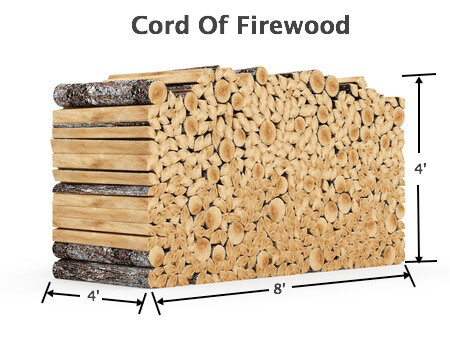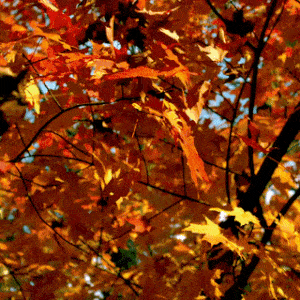#Pulpwood
Photo

“The vessel in the above picture sailed all the way from Norway to Sault Ste. Marie, Ont. Here we see the Vardefjell, which accompanied the Otto Sinding with a cargo of pulp for Milwaukee mills. They are loading tar at Sault Ste. Marie in preparation for the return voyage.”
- from the Kingston Whig-Standard. October 21, 1932. :Page 15.
#sault ste. marie#milwaukee#cargo ship#freighter#norwegian sailors#norwegian ship#lakers#great lakes#pulpwood#great depression in canada
3 notes
·
View notes
Video
Peek-A-Boo Car: Chicago and Northwestern Gondola 132181 Iron Mountain MI 9-6-1982 by Cody White
Via Flickr:
Here's a shot of CNW 40' Gondola 132181 at iron Mountain MI September 1982. This car was built in August 1945 and was shopped at Clinton IA in October 1980 when it was likely repainted. Judging by the light shing through onto the brake cylinder, I'm guessing this car has some floor panels removed. This car may have been used for pulpwood loading at one time given the floor has been removed and the panel in the side has been removed. There could be a couple reasons the side panel has been removed like shoveling out excess bark, an indication of assigned service or a viewing window for loading. The bark theory is a moot point if the floor has been removed essentially making a self-cleaning floor. This car may be in saw log service where the logs are larger in diameter than pulpwood and the logs are loaded lengthwise rather than crosswise. The pulpwood cars usually have taller end stakes like the car on the extreme right. A portion of a taller end stake can just be made out. It appears someone in the Clinton Car Shop had a sense of humor stenciling "Peek-A-Boo Car" on the side. Iron Mountain, MI September 6, 1982. John F. Campbell Original Slide from my Collection.
#Chicago#Northwestern#Gondola#132181#Iron#Mountain#MI#September#1982#CNW#40'#Pulpwood#Saw#Logs#Peek-a-Boo#Car#Vintage#flickr
0 notes
Text
#Timber#industry#announcement#timber#exchange#fan#pulpwood#board#pine#spruc#larch#fir#birch#oak#chipboard#pellets#drying#chambers#forester#forest#machines#woodworking#White#Beech#Logs#American#Wood#Imported#European#Steam
0 notes
Text

The cord is a unit of measure of dry volume used to measure firewood and pulpwood in the United States and Canada. A cord is the amount of wood that, when "racked and well stowed", occupies a volume of 128 cubic feet.
Wikipedia
thought you should know
16 notes
·
View notes
Photo

[ A female Sumatran rhinoceros, photographed by Cyril Ruoso. ]
“There is little doubt about the threats to Indonesia’s biodiversity. Sumatra, home to six critically endangered, iconic mammalian species found nowhere else—the Tapanuli orangutan, the Sumatran orangutan, the Sumatran tiger, the Sumatran rhinoceros, and the Sumatran elephant—has lost more than 80% of its lowland forests since the 1990s, to make room for pulpwood and oil palm plantations. Conflicts between humans and wildlife have become increasingly common. News stories frequently report elephants poisoned by angry farmers, tigers snared by poachers, and orangutans stranded in plantations.
Scientists and nongovernmental organizations (NGOs) say producing reliable population estimates and mapping remaining habitats are crucial to conservation. The environment ministry’s provincial conservation agencies (BKSDA) and national park rangers have supported such work on the ground, for example by counting orangutan nests, collecting elephant dung samples, and setting camera traps for tigers. But researchers say KLHK’s headquarters has kept data from such efforts under wraps.
Wulan Pusparini, an Indonesian wildlife conservationist at the University of Oxford, says her DNA-based population survey has shown the elephant population in a national park in southern Sumatra declined by 75% between 2001 and 2015. Provincial BKSDA officials were “very supportive” when she presented those data in 2018, she says, “but it got stuck in Jakarta.” KLHK’s central office has not allowed her to publish the findings, Pusparini says.
In 2020, the Sumatran Elephant Conservation Forum, a consortium of scientists and conservationists from various NGOs and BKSDA offices, produced what it called an Urgent Action Plan describing remaining elephant populations, the threats they face, and how they could be protected. KLHK’s director of conservation signed and released the document, but the ministry retracted it a year later. Among the reasons was what KLHK called “a counterproductive statement against the government” in the plan.
Studies on other species have met a similar fate. KLHK has not approved a consortium’s estimate for Indonesia’s tiger population, submitted in 2016; the data remain unpublished. (“It is the best available knowledge so far,” says an Indonesian member of the team.) The ministry also disputes a recent report from a specialist group at the International Union for Conservation of Nature that estimates there are fewer than 50 Sumatran rhinos left in the wild. KLHK says it’s between 67 and 75.
As to orangutans, the op-ed by Meijaard and his colleagues took issue with an upbeat assessment by KLHK Minister Siti Nurbaya on World Orangutan Day, on 19 August. The minister stressed Indonesia’s commitment to conservation but said all three species in the country—including the Tapanuli orangutan, whose existence is threatened by a hydropower project in North Sumatra—would continue to “grow and thrive.” Yet “A wide range of scientific studies … show that all three orangutan species have declined in the past few decades and that nowhere are populations growing,” the authors countered in The Jakarta Post.”
- Excerpt from “Indonesia bans five foreign scientists, shelves conservation data” by Dyna Rochmyaningsih.
50 notes
·
View notes
Video
NW0059 by Stanley Short
Via Flickr:
A westbound Norfolk & Western time freight blasts through Burkeville, VA on Dec. 7, 1974 with five units, led by SD45 No. 1717. He had them in the wind! At that time, there was a very active wood yard on the left. I was enjoying the sweet smell of fresh cut pulpwood.
13 notes
·
View notes
Photo

Lorne Bouchard;Spring Along a Pulpwood River
9 notes
·
View notes
Text
Industrial Wood Pellets Market 2029 is Anticipated to Register Robust Growth

Biomass as a Clean Energy Source and Increased Demand from Power Plants are factors driving the Global Industrial Wood Pellets Market in the forecast period 2025-2029.
According to TechSci Research report, “Industrial Wood Pellets Market - Global Industry Size, Share, Trends, Opportunity, and Forecast 2019-2029”, the Global Industrial Wood Pellets Market is expected to register robust growth during the forecast period. Since wood pellets form a clean, environmentally beneficial, sustainable, and renewable biomass, the rising global demand for renewable energy is driving the demand for wood pellets to reduce the usage of fossil fuels that contributes to global warming. This is expected to contribute to the growth of the industry over the forecast period. The key driving factor for increasing production of wood pellets in the U.S. includes rising demand from the global market.
Since some countries are not able of covering their own wood pellets demand with their own forest biomass for energy production, and their own industry infrastructure and they are importing wood pellets from the U.S. Manufacturers of wood pellets can buy wood biomass either from wood dealers or directly from private landowners through loggers. Wood pellets producers can also procure wood fiber from mill residuals, which are leftovers from other forestry sectors like paper and sawmills. Transportation costs are typically the primary cost component for mill residuals in this supply model as they can be purchased at lower costs than pulpwood and roundwood.
The market for different shipping firms, brokers, and traders is extremely complicated and fragmented in nature. Additionally, the transportation of wood pellets has unique characteristics that limit the number of ports and routes that are both affordable and able to handle huge quantities of wood pellets
Browse over XX market data Figures spread through XX Pages and an in-depth TOC on the "Global Industrial Wood Pellets Market.”
https://www.techsciresearch.com/report/industrial-wood-pellets-market/23670.html
Based on Application, The Heating segment emerged as the dominating segment in 2023. Pellets are a solid biomass fuel, primarily produced from wood residues and agricultural by-products like straw. Specific advantages of pellets as compared to unprocessed biomass include standardized properties, high energy content, and high density. Industrial Wood Pellets for heating applications are primarily used in residential and commercial sectors for food, cooking and grilling, and supplying heat to homes. Since the cost of pellets remained cheaper than that of other fuels for a long time, it has become a more economical option, addressing the primary concern of the residential and commercial sectors. In addition to this, in 2020, the Industrial Wood Pellets, due to oversupply, experienced a sharp decline in their prices.
As a renewable energy source, Industrial Wood Pellets have received subsidies and incentives from the governments in many countries, and many countries either launched or updated their policies and schemes related to Industrial Wood Pellets for heating applications in recent years. For instance, in January 2021, a new Wood and Pellet Heater Investment Tax Credit (ITC) came into effect in the United States, under which consumers buying highly efficient wood, pellet stoves, or larger residential biomass heating systems can claim a 26% tax credit that is uncapped and based on the full cost (purchase and installation) of the unit.
On a similar note, from April 2021, the United Kingdom amended its Domestic Renewable Heat Incentive (Domestic RHI) of 2014 to aim at promoting the use of renewable heat at residential levels. Within the amendment, the Department for Business, Energy & Industrial Strategy (BEIS) announced the relaxation of the requirement for accreditation applications to be submitted within twelve months of the eligible heating system's commissioning date. In addition, the participants whose heating system was commissioned on or after March 1, 2019, became eligible to apply for the Domestic RHI until the scheme closes to the new applications on March 31, 2022. Therefore, owing to the above points, the heating application is expected to dominate the wood pellet during the forecast period.
Based on Region, Europe is projected to dominate the market throughout the forecast period. In Europe, the demand for Industrial Wood Pellets is expected to increase by 30-40% between 2024 and 2029. Europe represents more than 50% of global pellet demand. European nations' use of pellets includes residential heating (40%), power plants (36%), commercial heating (14%), and combined heat and power plants (10%). Moreover, pellets have also made their way into coal conversion projects in local authority or public administration buildings such as schools and offices.
Most of the co-firing power stations have either closed or converted since these early projects, with several making a move to 100% Industrial Wood Pellets for fuel. The largest of these is Drax Power Station in North Yorkshire, which has converted four of its six 65 MWe generating units to run exclusively on biomass and is currently evaluating options for its remaining two coal-fired units.
Key market players in the Global Industrial Wood Pellets Market are: -
Enviva Partners LP
AS Graanul Invest
Drax Group PLC
Fram Renewable Fuels LLC
Segezha Group JSC
Lignetics Inc.
Biopower Sustainable Energy Corp.
Download Free Sample Report
https://www.techsciresearch.com/sample-report.aspx?cid=23670
Customers can also request for 10% free customization on this report.
“The industrial wood pellets market is driven by several key factors. Government initiatives and renewable energy policies play a pivotal role, fostering a transition towards cleaner energy sources. As countries worldwide commit to reducing carbon emissions, the carbon-neutral nature of wood pellets aligns with sustainability goals. Additionally, the rising awareness of climate change has prompted a shift towards eco-friendly alternatives, boosting the demand for wood pellets. Technological advancements have enhanced the efficiency of pellet production, making it more economically viable. The use of wood pellets contributes to energy security by diversifying energy sources and reducing dependence on imported fossil fuels.
Power plants increasingly adopt wood pellets, either exclusively or through co-firing with coal, as an effective strategy to lower carbon emissions. Financial incentives and subsidies provided by governments further encourage businesses to invest in biomass energy, propelling market growth. Global trade in wood pellets, coupled with increased investments in renewable energy infrastructure, fosters a dynamic and expanding market. The industrial wood pellets sector not only addresses environmental concerns but also reflects a global commitment to sustainable practices, making it a crucial player in the ongoing transition to a cleaner and more resilient energy landscape.” said Mr. Karan Chechi, Research Director with TechSci Research, a research-based global management consulting firm.
“Industrial Wood Pellets Market - Global Industry Size, Share, Trends, Opportunity, and Forecast Segmented by Application (Heating and Power Generation), By End User (Power Generation, Food Processing, Waste Management & Recycling, Others), By Region, and By Competition 2019-2029” provides statistics & information on market size, structure, and future market growth. The report intends to provide cutting-edge market intelligence and help decision makers take sound investment decisions. Besides the report also identifies and analyzes the emerging trends along with essential drivers, challenges, and opportunities in Global Industrial Wood Pellets Market.
Browse Related Reports:
Saudi Arabia Electronically Commutated Fans Market
Saudi Arabia Energy Efficient Low Horsepower AC Motors Market
Saudi Arabia Low Voltage Switchgear Market
Contact
TechSci Research LLC
420 Lexington Avenue,
Suite 300, New York,
United States- 10170
M: +13322586602
Website: https://www.techsciresearch.com
#Industrial Wood Pellets Market#Industrial Wood Pellets Market Size#Industrial Wood Pellets Market Share#Industrial Wood Pellets Market Trends#Industrial Wood Pellets Market Growth
0 notes
Text
ɪdʒrəpllrədɛnæʊlshəoə
Pronounced: ijruhpllruhdaynowlshuhouh.
Pantheon of: molality, actinism, cogency, inactiveness, egoism, impulsiveness.
Entities
Dðkætðdɛtmsʃɒfəɑthɪr
Pronounced: dthkatthdaytmsshoufuhahthir
Inactiveness: indolence.
Impulsiveness: impetuousness.
Legends: goldbrick.
Prophecies: population control, doubles, vigilantism.
Relations: ipɛmaʊiɪɛuaɪrdpɪðtʃmbml (spindrift), onnuðdfðoŋtdaɪstnwəbɛ (body waste).
Ipɛmaʊiɪɛuaɪrdpɪðtʃmbml
Pronounced: ipaymowiiayuairdpithtshmbml
Inactiveness: passivity.
Impulsiveness: impetuousness.
Legends: contraction, idolatry, contribution.
Prophecies: footstep, radioactive iodine excretion test, gold rush, oktoberfest, masonry.
Relations: vɪtkyɪləznəlsvətəsuw (paperboard), ptfɑəætɪʃuriosðɑsdrə (hard cider), thɛəsnsfktaɪhrnrðiwlə (holm oak).
Maɪswpəərnftteəɪɪəlws
Pronounced: maiswpuhuhrnftteuhiiuhlws
Inactiveness: languor.
Impulsiveness: hastiness.
Legends: attack, exemption, deep fording, daily double.
Prophecies: enlistment, manipulative electronic deception, hostile fire, harassment, pku test.
Relations: dðkætðdɛtmsʃɒfəɑthɪr (floccule), ɪðrnsiwʃəstesæunhɪɪð (hemiacetal), ipɛmaʊiɪɛuaɪrdpɪðtʃmbml (entertainment deduction), ɑʃstkəʌhzmtɪpəsuvrið (hexestrol).
Neʃzlʃnɒləəəʌɪneiurɪ
Pronounced: neshzlshnouluhuhuhuineiuri
Inactiveness: passivity.
Impulsiveness: impetuousness.
Legends: stomach exercise, sympathy strike, circumduction, save, careerism.
Prophecies: catharsis.
Relations: vɪtkyɪləznəlsvətəsuw (episome).
Onnuðdfðoŋtdaɪstnwəbɛ
Pronounced: onnuthdfthongtdaistnwuhbay
Inactiveness: passivity.
Impulsiveness: impetuousness.
Legends: laparoscopy, quo warranto, flit, lurch.
Prophecies: breeding, lick, mccarthyism, lateral thinking, neutrality.
Relations: trirhdrʃəkgruɪrfnuɒh (ratio), vɪtkyɪləznəlsvətəsuw (alkene), ptfɑəætɪʃuriosðɑsdrə (baddeleyite), neʃzlʃnɒləəəʌɪneiurɪ (glyceride).
Ptfɑəætɪʃuriosðɑsdrə
Pronounced: ptfahuhatishuriosthahsdruh
Inactiveness: indolence.
Impulsiveness: impetuousness.
Legends: charleston.
Prophecies: friedman test, luging, overindulgence, market penetration.
Relations: neʃzlʃnɒləəəʌɪneiurɪ (conjunction).
Thɛəsnsfktaɪhrnrðiwlə
Pronounced: thayuhsnsfktaihrnrthiwluh
Inactiveness: languor.
Impulsiveness: hastiness.
Legends: change of color, spin, recovery, superfecundation.
Prophecies: raffle, get.
Relations: ptfɑəætɪʃuriosðɑsdrə (anteriority), ədaɪəiutəiɪbðtrrɑkrny (ivory).
Trirhdrʃəkgruɪrfnuɒh
Pronounced: trirhdrshuhkgruirfnuouh
Inactiveness: indolence.
Impulsiveness: hastiness.
Relations: ədaɪəiutəiɪbðtrrɑkrny (gum arabic), ɑʃstkəʌhzmtɪpəsuvrið (sugar water).
Vɪtkyɪləznəlsvətəsuw
Pronounced: vitkyiluhznuhlsvuhtuhsuw
Inactiveness: passivity.
Impulsiveness: hastiness.
Legends: independence, close-quarter fighting, circularization.
Prophecies: amble, round, professional tennis.
Relations: trirhdrʃəkgruɪrfnuɒh (ammonium), neʃzlʃnɒləəəʌɪneiurɪ (oleic acid).
Ɑʃstkəʌhzmtɪpəsuvrið
Pronounced: ahshstkuhuhzmtipuhsuvrith
Inactiveness: passivity.
Impulsiveness: hastiness.
Legends: razing.
Prophecies: program, de-escalation.
Relations: maɪswpəərnftteəɪɪəlws (soybean oil), ədaɪəiutəiɪbðtrrɑkrny (agnomen), neʃzlʃnɒləəəʌɪneiurɪ (cortisone).
Ədaɪəiutəiɪbðtrrɑkrny
Pronounced: uhdaiuhiutuhiibthtrrahkrny
Inactiveness: languor.
Impulsiveness: impetuousness.
Legends: surveillance.
Prophecies: forgiveness, puncture, anti-takeover defense.
Ɪðrnsiwʃəstesæunhɪɪð
Pronounced: ithrnsiwshuhstesaunhiith
Inactiveness: indolence.
Impulsiveness: impetuousness.
Legends: tracing, near thing, pinball.
Prophecies: leapfrog, strain, deal.
Relations: maɪswpəərnftteəɪɪəlws (pulpwood).
0 notes
Text
Episode 180 - Pulp
This episode we’re talking about the fiction genre of Pulp! We talk about aliens, Mounties, sleuths, and vigilantes as discuss what counts as pulp and what doesn’t!
You can download the podcast directly, find it on Libsyn, or get it through Apple Podcasts, Stitcher, Google Podcasts, or your favourite podcast delivery system.
In this episode
Anna Ferri | Meghan Whyte | Matthew Murray | Jam Edwards
Things We Read (or tried to…)
Zenith Rand, Planet Vigilante by Richard Tooker
The Aliens by Murray Leinster
“All the Colors of the Rainbow” by Leigh Brackett
Republished in The Future is Female! 25 Classic Science Fiction Stories by Women, from Pulp Pioneers to Ursula K. Le Guin edited by Lisa Yaszek
The Blaft Anthology of Tamil Pulp Fiction, Vol. I edited by Rakesh Khanna, translated by Pritham K. Chakravarthy
Sally the Sleuth by Adolphe Barreaux - Forward by Tim Hanley
Scarlet Riders: Pulp Fiction Tales of the Mounties edited by Don Hutchison
Planet Scumm - Issue 15: Major Arcana
The Battle of York by James Stoddard
Other Media We Mentioned
Two-Fisted Library Stories on itch.io
Encyclopedia of Pulp Fiction Writers by Lee Server
Sensuous Science Fiction from the Weird and Spicy Pulps edited by Sheldon Jaffery
McSweeney's Enchanted Chamber of Astonishing Stories edited by Michael Chabon
A Study in Emerald by Neil Gaiman (Wikipedia)
The Importance of Being Earnest by Oscar Wilde (Wikipedia)
Links, Articles, and Things
Episode 179 - Battle of the Books 2023
The Fantastical Pulp Art of 1960s and ’70s Mexico
Two-Fisted Library Stories on itch.io
The Shadow (Wikipedia)
Pulp collections available online:
The Pulp Magazines Project: “an archive of all-fiction pulpwood magazine from 1896-1946”
The Pulp Magazine Archive at Internet Archive
Weird menace (Wikipedia)
Episode 19: Weird Fiction (not “New Weird” as Matthew says)
Sauron (comics) (Wikipedia)
Betty Ross (Wikipedia)
Heritage Minutes: Sam Steele
Canada Vignettes: Log Driver's Waltz
15 Pulp Novels & Anthologies by BIPOC Authors
Every month Book Club for Masochists: A Readers’ Advisory Podcasts chooses a genre at random and we read and discuss books from that genre. We also put together book lists for each episode/genre that feature works by BIPOC (Black, Indigenous, & People of Colour) authors. All of the lists can be found here.
Adios Muchachos by Daniel Chavarría, translated by Carlos Lopez
Ring Shout by P. Djèlí Clark
Bad Men and Wicked Women by Eric Jerome Dickey
Four Bullets for Dillon by Derrick Ferguson
The Green Lama: Scions by Adam Lance Garcia
The Banks by Roxane Gay and Ming Doyle
A Rage in Harlem by Chester Himes
Blind Corners by Jemir Robert Johnson
It Came from Del Rio by Stephen Graham Jones
The Blaft Anthology of Tamil Pulp Fiction edited by Rakesh Khanna, translated by Pritham K. Chakravarthy
Vengeance is Mine, All Others Pay Cash by Eka Kurniawan, translated by Annie Tucker
Once Upon a Time in Afrika by Balogun Ojetade
One-Shot Harry by Gary Phillips
Black Pulp II edited by Kimberly Richardson
Trail of Lightning by Rebecca Roanhorse
Give us feedback!
Fill out the form to ask for a recommendation or suggest a genre or title for us to read!
Check out our Tumblr, follow us on Instagram, join our Facebook Group, or send us an email!
Join us again on Tuesday, August 22nd when we’ll be talking about books and other media we’ve recently enjoyed!
Then on Tuesday, September 5th when we’ll be discussing the format of Lyric Poetry!
1 note
·
View note
Text
instagram
5 reasons to avoid viscose clothing
1) 300M trees are felled a year to produce it
2) the process is highly polluting and releases toxic chemicals
3) dissolving tree pulp wastes approximately 70% of the tree
4) forests are being replaced with pulpwood plantations
5) 75% of the world's leading brands have made few to no commitments to sourcing more sustainable viscose
0 notes
Photo

“German Steamer At Wharf Here,” Kingston Whig-Standard. October 26, 1932. Page 12.
---
Part of Cargo Shipped by Rail From Montreal to Kingston
---
The steamer Brattenburg of Hamburg, Germany, arrived at the Richardson elevator this morning on her way to Michigan and was expected to leave tonight.
The Brattenburg made the trip direct from Norway bringing over a load of pulpwood. At Montreal, it was found that her cargo was too big and caused too much draught for the Soulanges Canal. Accordingly, some of the cargo was lightered and the boat proceeded to Kingston, where the balance of the cargo was shipped and re-loaded.
#kingston ontario#montreal#hamburg#pulpwood#steamer#freighter#st. lawrence river#transatlantic shipping#shipping news#german sailors#soulanges canal#great depression in canada
0 notes
Text
Pulp magazines were designed to be disposable. Named after the cheap pulpwood paper they were printed on, they aimed for a mass audience—particularly working-class readers—and specialized in genres like detective, erotica, science fiction, and romance. Lurid, over-the-top cover art made the pulps both notorious and iconic
and then came zines
0 notes
Text
Here are 20 types of trees and some reasons why they are significant:
1. Oak: Oaks are known for their strength and longevity, and have been used for construction and furniture-making for centuries.
2. Maple: Maples are known for their stunning fall colors and are often used for syrup production.
3. Pine: Pines are known for their evergreen needles and are used for lumber, pulpwood, and Christmas trees.
4. Redwood: Redwoods are giant trees that can grow to be over 300 feet tall and are found primarily in California. They are known for their strength and beauty.
5. Sequoia: Sequoias are also giant trees found in California, and are known for their massive size and longevity.
6. Birch: Birches are known for their distinctive white bark and are often used for paper production.
7. Cherry: Cherry trees are known for their beautiful spring blossoms and are often used for ornamental purposes.
8. Dogwood: Dogwoods are known for their stunning spring flowers and are often used for ornamental purposes.
9. Elm: Elms are known for their towering size and have been used for furniture-making and construction for centuries.
10. Ginkgo: Ginkgo trees are known for their unique fan-shaped leaves and are often used for medicinal purposes.
11. Magnolia: Magnolias are known for their large, fragrant flowers and are often used for ornamental purposes.
12. Cedar: Cedars are known for their strong, aromatic wood and are often used for furniture-making and construction.
13. Aspen: Aspens are known for their shimmering leaves and are often used for paper production.
14. Apple: Apple trees are known for their delicious fruit and are often used for orchards and cider production.
15. Eucalyptus: Eucalyptus trees are known for their distinctive scent and are often used for paper production and as a source of essential oils.
16. Black walnut: Black walnut trees are known for their beautiful wood and are often used for furniture-making.
17. Banyan: Banyan trees are known for their sprawling size and unique aerial roots, and are often used for ornamental purposes.
18. Sycamore: Sycamores are known for their distinctive bark and are often used for furniture-making and construction.
19. Redbud: Redbud trees are known for their stunning pink or purple spring blossoms and are often used for ornamental purposes.
20. Hickory: Hickory trees are known for their strong, durable wood and are often used for furniture-making and tool handles.
Each of these trees has unique characteristics and uses, and they all play an important role in the ecosystem and human culture.

0 notes
Text
Drinking with Authors - Ep 301 - Carol Van Den Hende
New Post has been published on https://esonetwork.com/drinking-with-authors-ep-301-carol-van-den-hende/
Drinking with Authors - Ep 301 - Carol Van Den Hende

Carol Van Den Hende is an award-winning author who pens stories of resilience and hope. Her novels “Orchid Blooming” and “Goodbye, Orchid” have been awarded more than 20 times, winning the 2020 American Fiction Award for urban fiction, 2020 Pinnacle Achievement Award for multicultural fiction, IAN Outstanding Fiction for Best New Novel, Best Book Finalist, Royal Dragonfly Award, Audiobook Reviewer Author of the Year. Plus, “Goodbye, Orchid” has been named one of the most anticipated fall reads by Buzzfeed, Parade, and Travel+Leisure, one of The Write Review’s Top Books of 2020 and has been featured in Glamour, Bookstr, Frolic, Chicago Tribune, LA Times, DIYMFA, WABC Radio among others. The Pulpwood Queens selected Goodbye Orchid as a 2022 Bonus Book-of-the-Month.
She’s also a speaker, strategist, Board member and Climate Reality Leader. One secret to her good fortune? Her humorous husband, fun-loving twins, and rescue cat, who prove that love really does conquer all.
Amazon: https://www.amazon.com/Carol-Van-Den-Hende/e/B08FTLB271/ref=aufs_dp_fta_dsk
Discount Code: DWA10
Music by Jam Hansley
Follow Us and Buy Our Books!
Website: https://4horsemenpublications.com/
All Social Media: @DrinkingWithAuthors
This Episode is sponsored by Skunk Brothers Spirits
Website: https://skunkbrothersspirits.com/
Discount Code: DWA10
Skunk Brothers Spirits was started by a family of disabled veterans focused on locally-sourced, quality distilled spirits. The Washington-based team is building on their grandfather’s prohibition-era moonshine recipe to bring small batch spirits to the Gorge and beyond!
#AuthorELance#Carol Van Den Hende#Drinking#drinking podcast#drinking with authors#Drinkingwithauthors#Drunk History with Authors#erika lance#Erikalance#ESO Network
0 notes
Link
Greenhouse cultivation, complete isolation and gibberellin treatment. The resulting aqueous solution residue is adjusted to pH 3 with 6N-HCI, and after partitioning with ethyl acetate, the ethyl acetate phase is partitioned with a phosphate buffer solution. The rice buffer phase is adjusted to pH 3 with 6N-HC1, and separated with ethyl acetate to separate the ethyl acetate fraction (acidic fraction).
0 notes
